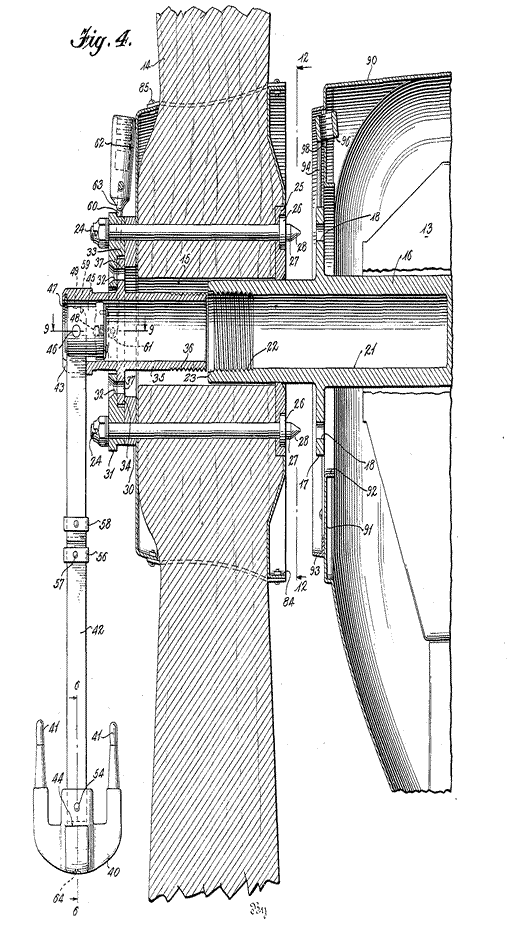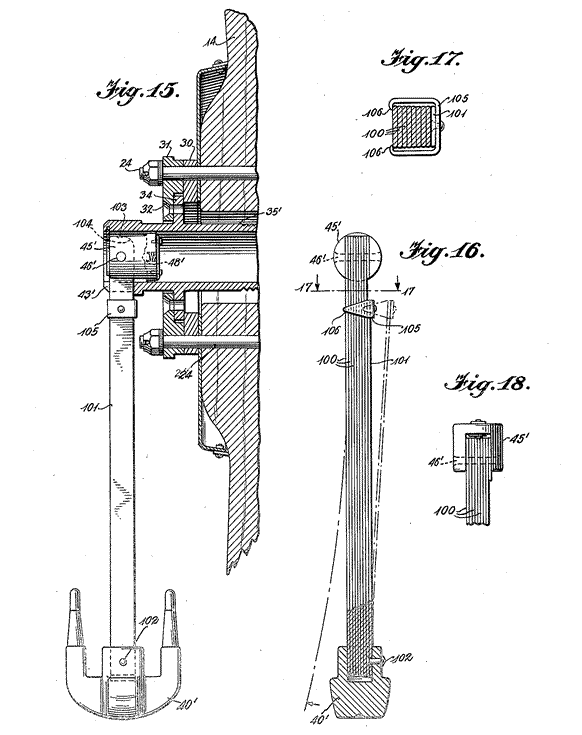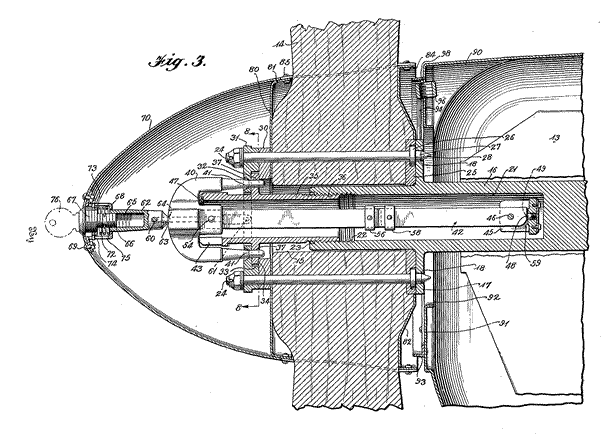My Father said that the machinist that they used, Fred Underhill, put a lot of his own intellect into many of the innovations that were incorporated into the Airphibian and one of them was the Propeller Hub Mounting.
Interestingly enough, if you look at Fig 2 of the Patent, you'll see that the drawing is of a 2 bladed propeller, as are all the configurations in the patent itself. But all the photos show 3 bladed propellers.
A patent was granted for Hub Mounting for Propellers on Roadable Airplanes No. 2,509,096 on May 23, 1950. It was filed by R E Fulton Jr and Octavio J Alverez on June 23, 1945. It actually is a very well designed piece of machinery.

In this patent drawing the propeller is about to be attached to the back plate. The bolts that hold the prop to the front plate are the long bolts with the snub nosed buttons that engage in the holes in the back plate. The crank handle is ready to be turned to start the 1 1/2" Puller bolt to thread into the machined female thread in the engine crankshaft. The 2 pointed parts at the end of the crank handle engage in two holes at the end of the hub when the crank handle is pushed into its home inside the hollowed out engine crankshaft.

Figures 15, 16, 17 and 18 show the overtorque prevention device built into the crankhandle. The crankhandle is actually made of layers of metal leaves that flex slightly as the handle is turned to tighten the puller bolt. There is a clip, #105, connected to one of the leaves attached to the handle of the crankhandle only. When the crankhandle is tightened enough the small returns on the 4th side of the clip will spread and move to the next leave, indicating that the bolt has been torqued enough. It is easily reset by pushing it back in place.

In Fig 3 the propeller is ready to be used. Everything is attached, the crankhandle is in place and the spinner hub is locked on. The key to the spinner hub is also the ignition key |

